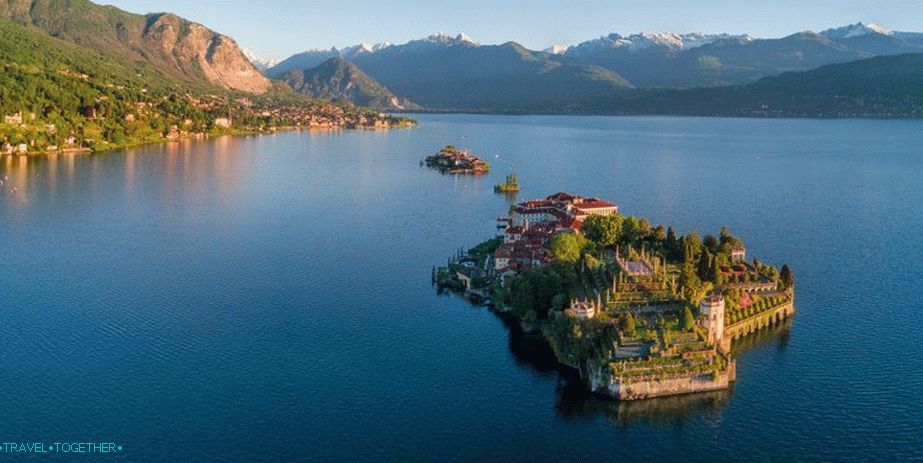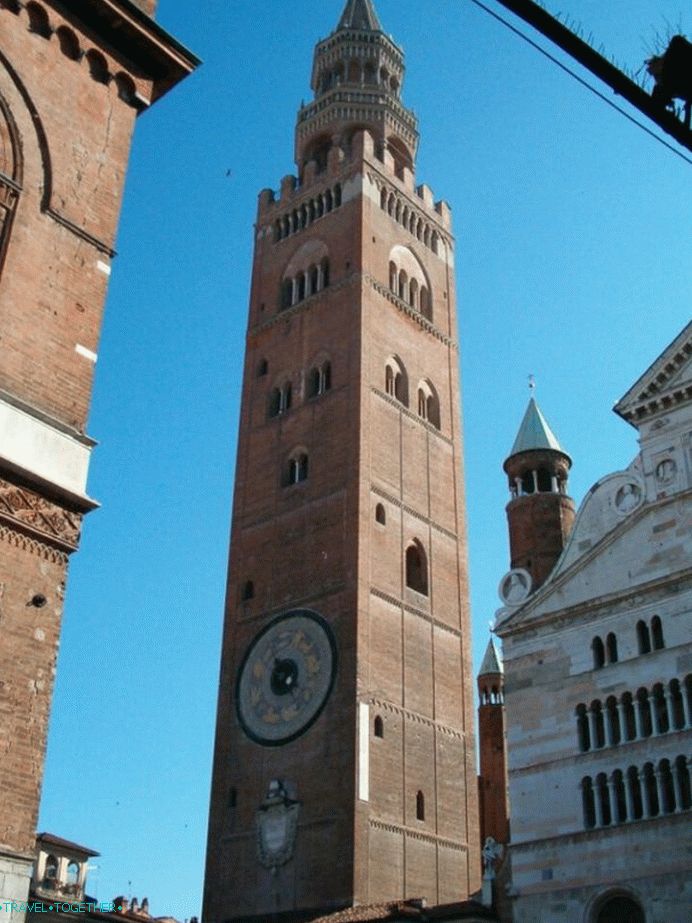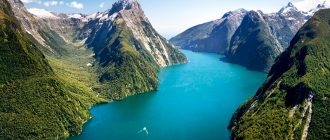Lombardy (Italy) – the most detailed information about the region with a photo. The main attractions of Lombardy with a description, guides and maps.
Contents
Lombardy (Italy)
Lombardy is a region in the north of Italy. This is the most densely populated administrative-territorial unit of the country and its richest area. Lombardy is one of the largest Italian regions with beautiful and diverse nature as well many picturesque cities that have absorbed the magnificent cultural and historical heritage. This is a unique harmony. history, art and culture with modern innovations, technology and fashion.
Lombardy is the most industrious region of Italy, the industrial and the financial center of the country. This area provides 1/5 part Italian GDP and is also the engine of Italian economy. Lombardy is famous for its picturesque lakes, fertile mails and great gastronomy. It is interesting and varied. a region that is very different from the rest is a bit reckless, windy and temperamental Italy.
- Geography and climate
- Best time to visit
- Practical information
- Cities of Lombardy
- Top Destinations
- Story
- How to get there
- Food and drink
- sights
- Video
- Maps and guides
- Comments and reviews
Geography and climate
Lombardy is located in the north of Italy, occupying the territory between Alps and the valley of the river Po. The region is bounded by Switzerland, as well as Piedmont, Emilia-Romagna, Venice (Veneto) and Trentino-Alto Adige. In terms of topography, 47% of the territory of Lombardy is these are plains, 41% are mountains and foothills, 12% are hills. Lombardy is dotted with large and small lakes. Largest and the picturesque ones are: Garda, Como and Maggiore. Largest rivers Lombardy – Poe and Adda.
 Lake Maggiore
Lake Maggiore
Lombardy, for the most part, has a transitional climate between temperate and subtropical. It is characterized by hot and hot in the summer, and also in a rather cool winter. In the mountains and foothills the climate is becoming more continental and colder.
Best time to visit
Lombardy can be visited all year round. But the most ideal May – June and September – October will be the time.
Practical information
- The population is about 10 million people.
- The area is 23,863.65 km².
- The language is Italian. Lombard region tongue.
- Currency – Euro.
- Visa – Schengen.
- Time – Central European (UTC +1, summer +2).
Cities of Lombardy
 Milan
Milan
Milan is the capital of Northern Italy and the main city of Lombardy. it modern metropolis, which is considered a business and financial center of the country. Milan is the capital of fashion and business, the most stylish, expensive and rich Italian city. Here you can look at such famous sights as: the magnificent Duomo, Sforza Castle, listed as a World Heritage Site Unesco, the church of Santa Maria delle Grazia, where Leonardo da Vinci’s legendary fresco “The Last Supper” and many other equally interesting monuments of history and culture.
 Bergamo
Bergamo
Not far from Milan is located the magnificent Bergamo, rich sights. Here you can look at the old cathedrals, towers, historic squares and buildings. Bergamo City divided into two parts: “Upper City”, located on a hill and walled, and the Lower City, combined with time suburbs (suburbs). Upper City is a medieval core surrounded by mighty bastions built in the 16th century by the venetians. The main bergam attractions. The lower city is crossed by the river Morla. is he formed in the development of some villages located along the main communication lines and is the exact opposite Upper Town, featuring wide streets and modern buildings.
 Sirmione
Sirmione
Sirmione – a city in the province of Brescia in Italy on a picturesque lake Garda Sirmione can rightly be called the pearl of Lombardy and one of the most popular tourist centers of Northern Italy. The historic center of the city is located on a peninsula that is like crashes into the lake. Sirmione will conquer the picturesque nature interesting sights, relaxing atmosphere and delicious cuisine.
 Brescia
Brescia
Brescia – a magnificent historic city, located 100 km from Milan. Famous for its Roman ruins, the great sacred monuments and interesting museums. It is a rich industrial city, surrounded by picturesque lakes and beautiful historical cities. Usually there are quite a few tourists, which allows you to completely plunge into the local flavor and atmosphere.
 Lecco
Lecco
Lecco is a picturesque town in the southeastern part of Lake Como. AT first of all, it is distinguished by stunningly beautiful nature and a long history.
 Cremona
Cremona
Cremona is a charming historical city known for creators of stringed instruments, among which stand alone stands out the great Stradivarius.
Top Destinations
- Como is a picturesque lake that is one of the most deep in Europe.
- Garda – the largest lake in Italy, located at the foot of the South The Alps at the junction of three regions: Lombardy, Venice and Trentino-Alto Adige. This place is beloved by the Italians and It is famous for its beautiful nature as well as its magnificent historic legacy.
- Catulla Caves – an archaeological site of a former Roman villa, located near Sirmione.
- Valcamonica is a UNESCO World Heritage Site. This is the valley including medieval cities, castles, ancient churches and roman ruin.
- Oltrepò-Pavese – wine region in southern Lombardy with beautiful historic cities and medieval locks.
Story
Lombardy was settled in the Neolithic era. In the 5th century BC on the territory of the region lived Etruscans. A century later invaded here Gallic peoples. In the 3rd century BC. Po Valley was conquered by the Romans. AT the period of the split of the Roman Empire, Lombardy was the center of its The western part. In the 5th century, the region was devastated by the Ostrogoths. After Gothic War Lombardy became part of Byzantium. In the 6th century these the lands were conquered by the Lombards, who, in fact, gave name of the region.
 Lake Garda
Lake Garda
In the 8th century, Lombardy was conquered by the Franks. Then the region became the object of the struggle between the local nobles and the Burgundian kings. AT 10th century Lombardy was annexed to the Holy Roman Empire. Then the Lombard Union of Cities was formed, in fact independent state led by Milan. In 1158 and in the following decades, the German emperors attempted conquer the Lombard cities, but they managed to defend their independence.
In the 12th and 13th centuries, the cities of Lombardy grew and grew rich. In the 13th century the north of Italy was shaken by the struggle of Guelphs and Ghibellines, which led to the seizure of power in Milan by the Visconti dynasty. In 1395 the duchy of Milan was formed, subordinate in 1516 French, but soon taken away by the Spanish Habsburgs. AT 1714 Lombardy (after the war for the Spanish Succession) moved to Austria. During the Napoleonic Wars, the region became part of Tsizalpinsky republic. In 1802, Lombardy was joined to Italy. Then in 1815 it was formed Lombardo-Venetian kingdom. In 1859, Lombardy again returned to Italy, which still remains since then
How to get there
Milan is served by two major airports, which are one of the largest air ports of Italy. Also airports located in Brescia and Bergamo. Last known big number of low cost flights. Regular bus and rail links to the region with other administrative-territorial units of Italy, as well as with Switzerland, Austria, France. In addition, lead to Lombardy several major highways.
Food and drink
Lombardy is famous for its gastronomy and local delicacies. Among the traditional dishes stand out: risotto with saffron, chop in Milan, pork and cabbage cassula, as well as pizza (buckwheat version of tagliatelle). Local delicacies: Bresaola (dried beef), gorgonzola (blue mold cheese), parmesan. Lombardy is also famous for white, red and sparkling wines.
 Chop in Milan
Chop in Milan
sights
 Duomo in Milane
Duomo in Milane
Duomo or the Cathedral of Santa Maria Nacente – a symbol of Milan, located in the heart of the city on the eponymous square. Is an one of the largest religious buildings in the world (accommodates about 40,000 people) and probably the most beautiful church in style gothic Duomo built over four centuries from the 14th century. Him the roof is topped with 135 spiers, and the facade is decorated with 2,245 marble statues. Modest interior, strikingly contrasting with brilliant and richly patterned facade, produces a strong impressed by giant pillars. The stained glass windows and nave of the Duomo are largest in the world. Inside you can see a bronze candelabrum. 1200, the grave of Giacomo Medici, the reliquary of San Carlo Borromeo. Very atmospheric will be a walk on the roof of the Duomo, from where on clear days You can see the snow-capped peaks of the Alps.
 Santa Maria delle Grazie
Santa Maria delle Grazie
Santa Maria delle Grazie – 15th century brick gothic church with a dome of the early Renaissance Bramante. Received the world fame thanks to the fresco by Leonardo da Vinci “The Last Supper”.
 Sforza Castle
Sforza Castle
Sforza Castle – one of the main attractions of Milan, listed as a UNESCO World Heritage Site. Castle was built in the 14th century and was the main residence of the Milanese rulers – Visconti and Sforza. Now here is a magnificent museum with such rarities as Michelangelo’s last masterpiece, paintings Bellini, Correggio, Mantegna, Berggone, Foppa, Lotto, Tintoretto, Egyptian and other antiquities, medieval weapons.
 Upper Town in Bergamo
Upper Town in Bergamo
Upper Town in Bergamo – a magnificent medieval core, surrounded by mighty Venetian bastions included in the list UNESCO World Heritage sites. Also located here several wonderful sacred monuments. For example, basil Santa Maria Maggiore – the magnificent church of the second half of the 12th century, which combines the architecture of the Roman-Langobard period, or Colleoni Chapel – a majestic and beautiful landmark Renaissance.
 Castle Scaligers in Sirmione
Castle Scaligers in Sirmione
Castle Scaligero in Sirmione – a magnificent medieval building built in the 13th century in the harbor on Lake Garda. it a real outpost with powerful walls and towers connected stairs and passages
 Torazzo in Cremona
Torazzo in Cremona
Torazzo in Cremona – a medieval bell tower that is the highest in Italy (111 m.).
 Sacral monuments of Brescia
Sacral monuments of Brescia
Located in the historic center of Brescia on Piazza Duomo several magnificent sacred monuments. This is a new cathedral, built between 1604 and 1825, which represented various architectural styles from late baroque to rococo. BUT also the old cathedral is an 11th century Romanesque rotunda.
 Historical core of mantua
Historical core of mantua
The historic core of Mantua is a UNESCO World Heritage Site, which is famous for Renaissance architecture as well artistic and cultural heritage.






